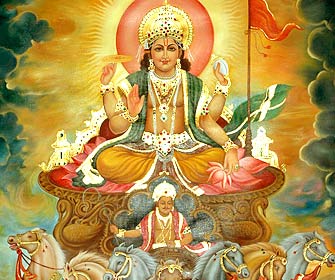If you haven’t read the introduction to this series of weekly blog posts you can read it here “sharing The Greatness of Saturn” It’s well worth reading before you dive into the story. This series of posts is inspired by Svoboda’s book: “The Greatness of Saturn – A therapeutic Myth”.
Setting the scene
The Heroic King Vikramaditya once ruled the city of Ujjayani. He was an intellectual philanthropist of a king who protected his citizens like his own family and they in turn looked to their king as a father. He was a righteous man anxious to relieve his subjects of their misery. When he ruled goodness and right conduct permeated every corner of his kingdom.
A man of wisdom and insight who radiated the luster of the the guardians of the 10 directions, King Vikrama drew all the greatest minds of the age to his court like bees drawn to a particularly sweet flower. As bees help a flower to multiply so the king multiplied his own knowledge by drawing these experts into discussion and debate on the issues of the day. The king would consult his court of sages, ritual specialists, strategists and pundits and they would extensively deliberate and debate before finally reaching consensus.
One day the king sat serenely in his finely decorated court, the incense coiling silently around his throne. There had been much debate that morning until a question that was dear to the king’s heart was raised: Which of the nine planets is paramount? The assembled court possessed many great mages who had traversed the vast ocean of astrological knowledge and upon whom had been bestowed the blessings and benefits of the various astrological deities. Each planet had a champion represented at the court in whom the attributes of the celestial beings was embodied.
Stillness descended then on all sides as a space was cleared and the experts gathered to each make their presentation to the benevolent and wise king.

The Sun
The Sun’s champion stepped forward to speak first as the Sun is the brightest of planets. His broad confident face was framed with mane like hair. His steady burning eyes radiated dignity, power and authority. As he spoke his proud and modestly arrogant voice boomed out across the space: “The Sun is superior among all the planets, and he becomes pleased with whoever reveres him consistently. Among the planets he is God incarnate in solar form. Those who regularly and devotedly remember the Sun lose all their worries, disease and poverty – for unwavering worship of the Sun destroys all obstructions and fulfills all cherished desires!”
The Sun wears red flowers and saffron coloured clothes. He carries a red lotus in his hand. His metal is gold or copper and his Gem is ruby. In the body he rules the bones. On earth the Sun rules over Sunday and in the heavens he rules the constellation of Leo.
The Sun’s vehicle is a chariot drawn by 7 green horses. The 7 haritas represent the 7 vedic meters: Gayatri, Tishtup, Anushrup, Jagati, Pankti, Brihati and Ushnik.
There is no reckoning of time without the Sun, and without time there can be no poetic meters, no seasons and no rhythm in the world. The year is the wheel of the Sun’s chariot. That wheel has 12 spokes which are the twelve months. Each month has it’s own deva (deity), apsaras (celestial dancing maidens), Rakshasas (protectors), Serpents, Yakshas (demi gods), Rishis (seers) and Gandharvas (celestial musicians).
Each deva is a divine being who occupies the Sun’s mansion during that month and presides over the sun then. These devas increase the Sun’s own superb splendor with their own divine characteristics. The Rishis compose hymns with which to eulogize the Sun. The gandharvas and apsaras serve the solar deity with song and dance. the yakshas and their attendants worship his rays. The serpents carry the Sun and the rakshasas follow him. From sunrise to sunset the Valakhilyas, the 60 thousand thumb-sized Rishis, surround the Sun and lead him on.
The 12 solar devas are the 12 Adityas the sons of Aditi. The 12 Adityas are: Vivasvan, Aryama, Pushan, Tvashtri, Savitri, Bhaga, Dhata, Vidhata, Varuna, Mitra, Shakra and Urukrama.
The Sun’s champion went on to recount numerous tales of the greatness of the Sun. I’ll share one with you: One day the notoriously peevish Rishi Durvasas visited Krishna in his capital city Dwaraka. Lord Krishna welcomed him and showed him every courtesy but Krishna’s son, Samba mocked the ill-tempered Rishi. At first Durvasas managed to control his temper out of respect for Krishna but Samba continued to tease him. Finally Durvasas lost his cool and cursed the boy with white leprosy. On hearing this Krishna went to Durvasas and begged his pardon asking him how the curse could be lifted. Durvasas answered: “Have the boy follow the Sunday Vow and worship the Sun.” Samba did so faithfully and when he was cured he built a beautiful temple to the Sun in gratitude.
The Sun’s champion then addressed the king saying “It is therefore wise to perform regular, disciplined worship of the omnipotent Lord Surya Narayana. By doing the Gayatri the Brahmanas obtain clear discrimination and by doing the sun salutations (surya namaskara) yogis gain health, strength and awareness. Those who regularly repeat the sacred Aditya Hridaya hymn conquer all their foes as surely as Lord Ramachandra slew Ravana in battle. It is to that Sun that I prostrate myself at dawn each morning.”
Next week’s blog post: The moon.

No comments yet.